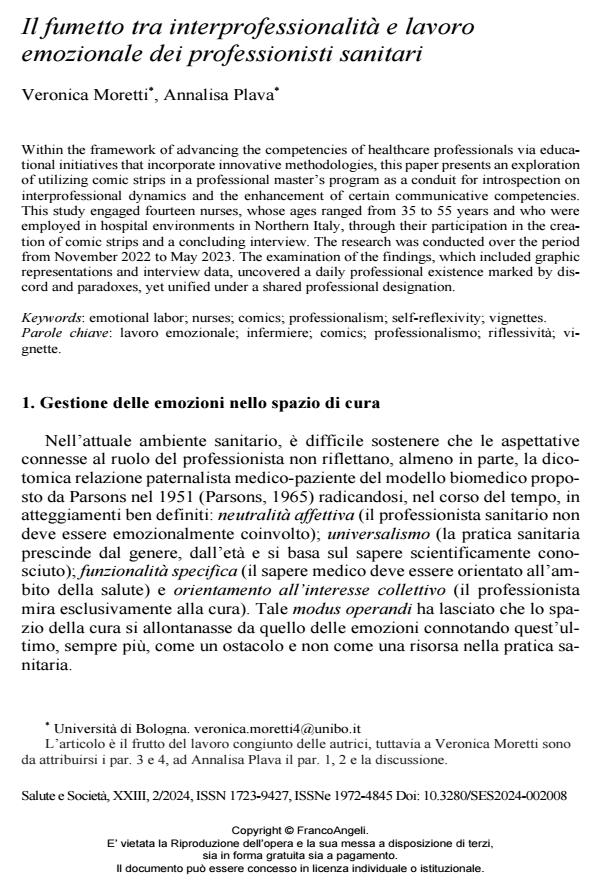Il fumetto tra interprofessionalità e lavoro emozionale dei professionisti sanitari
Titolo Rivista SALUTE E SOCIETÀ
Autori/Curatori Veronica Moretti, Annalisa Plava
Anno di pubblicazione 2024 Fascicolo 2024/2
Lingua Italiano Numero pagine 15 P. 118-132 Dimensione file 326 KB
DOI 10.3280/SES2024-002008
Il DOI è il codice a barre della proprietà intellettuale: per saperne di più
clicca qui
Qui sotto puoi vedere in anteprima la prima pagina di questo articolo.
Se questo articolo ti interessa, lo puoi acquistare (e scaricare in formato pdf) seguendo le facili indicazioni per acquistare il download credit. Acquista Download Credits per scaricare questo Articolo in formato PDF

FrancoAngeli è membro della Publishers International Linking Association, Inc (PILA)associazione indipendente e non profit per facilitare (attraverso i servizi tecnologici implementati da CrossRef.org) l’accesso degli studiosi ai contenuti digitali nelle pubblicazioni professionali e scientifiche
Within the framework of advancing the competencies of healthcare professionals via educa-tional initiatives that incorporate innovative methodologies, this paper presents an exploration of utilizing comic strips in a professional master’s program as a conduit for introspection on interprofessional dynamics and the enhancement of certain communicative competencies. This study engaged fourteen nurses, whose ages ranged from 35 to 55 years and who were em-ployed in hospital environments in Northern Italy, through their participation in the creation of comic strips and a concluding interview. The research was conducted over the period from November 2022 to May 2023. The examination of the findings, which included graphic repre-sentations and interview data, uncovered a daily professional existence marked by discord and paradoxes, yet unified under a shared professional designation.
Parole chiave:lavoro emozionale; infermiere; comics; professionalismo; riflessività; vignette.
Veronica Moretti, Annalisa Plava, Il fumetto tra interprofessionalità e lavoro emozionale dei professionisti sanitari in "SALUTE E SOCIETÀ" 2/2024, pp 118-132, DOI: 10.3280/SES2024-002008